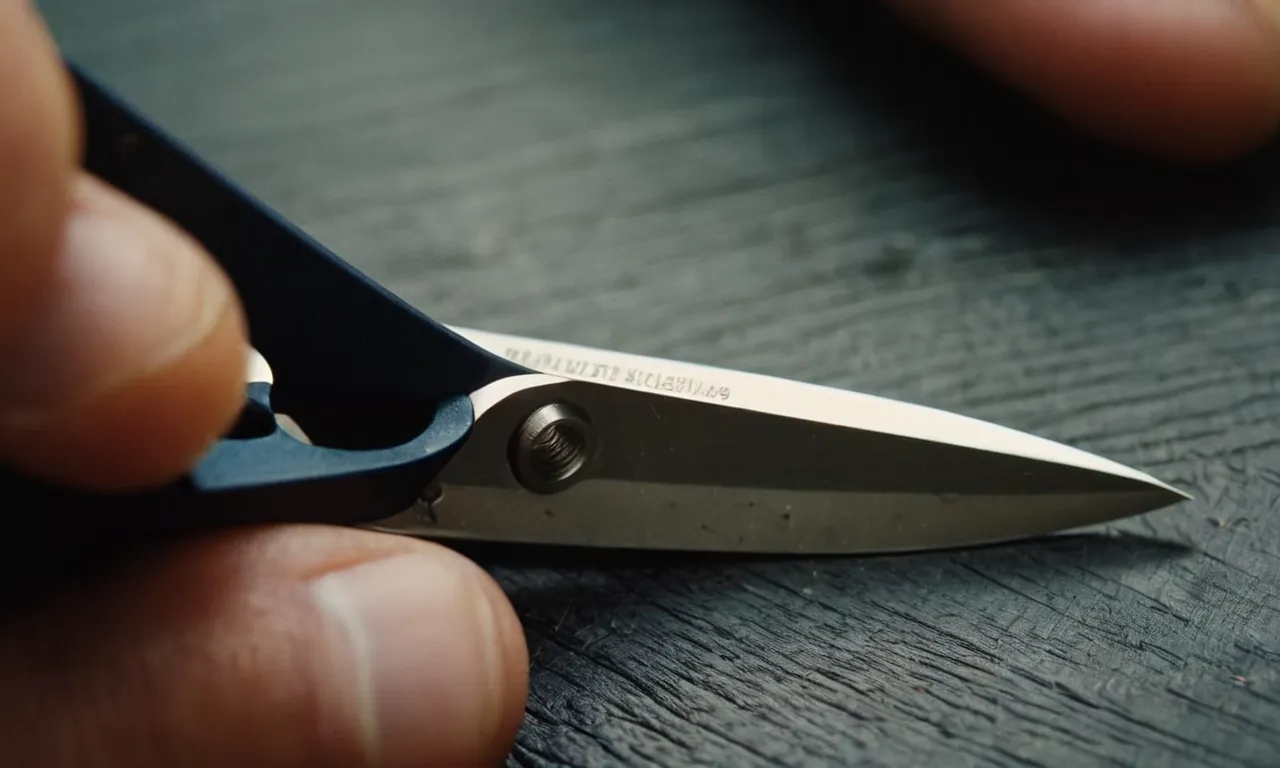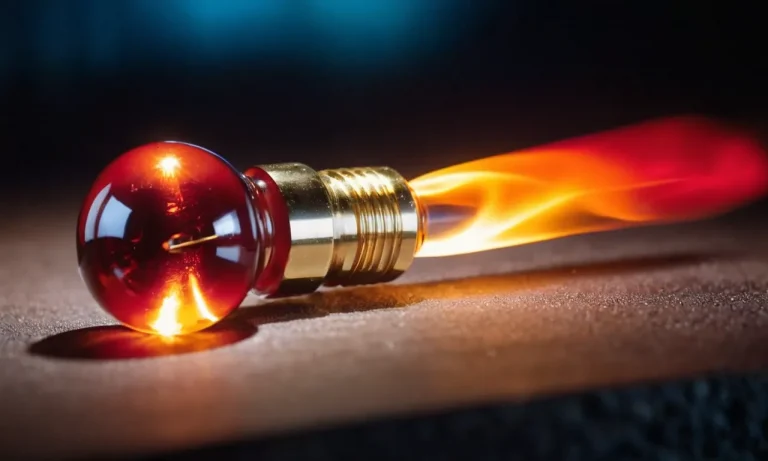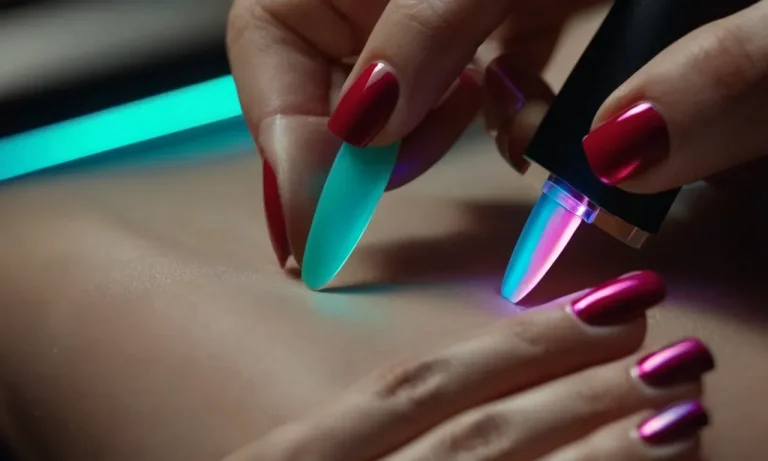How To Sharpen Scissors With A Nail File
Do you have a pair of scissors that have become dull and aren’t cutting well anymore? Before you throw them out and buy a new pair, try sharpening them with an emery board or nail file. This quick DIY trick can restore the sharp edge on your scissors in just a few minutes.
If you’re short on time, here’s a quick answer to your question: Run the blades of the scissors against a nail file or emery board in opposite directions to sharpen the edges. Apply firm, even pressure as you pull the blades across the abrasive surface. Do about 10-20 swipes on each blade.
In this comprehensive guide, we’ll cover everything you need to know to sharpen your scissors at home with just a nail file or emery board. You’ll learn the supplies needed, steps to follow, tips for getting a razor-sharp edge, and how to maintain sharpness.
Supplies Needed
Nail file or emery board
An emery board or nail file is the most important supply for sharpening scissors. You’ll need a file that is roughly 100 grit or higher to effectively sharpen the blades. Emery boards meant for filing nails work perfectly and are inexpensive.
Look for a board that has a fine grit sandpaper on each side so you can smoothen and shape the scissor blades. Make sure to use a fresh board, as worn down boards won’t sharpen as effectively.
Scissors that need sharpening
The scissors that need sharpening are obviously essential! Any type of scissors can be sharpened with a nail file, including household scissors, hair cutting scissors, sewing scissors, and more. Make sure to inspect the scissors for any rust or damage on the blades prior to sharpening.
If the blades are very dull or have chips, you may need to use a whetstone instead of a nail file to adequately sharpen them. Otherwise, most scissors can be sharpened up with some filing.
Newspaper or rag
Having a newspaper, rag, or other protective surface is key for containing the metal filings and catching any oil during the sharpening process. Lay down a few sheets of newspaper or an old rag on your work surface before sharpening. This will protect your table or counter from damage.
The paper will also make cleaning up after sharpening very easy. Simply fold up and discard the filings when you’re done! A clean rag can also be used to wipe down the blades and remove any oil or dirt.
With these basic supplies – a nail file, the scissors to be sharpened, and an old newspaper or rag – you’ll be ready to start sharpening your scissors in no time! The process is simple, fast, and affordable.
Sharpening scissors yourself helps save money on professional sharpening services and gives you a handy DIY skill. So grab your emery board and get filing – you’ll be cutting crisp, clean lines again in just a few easy steps!
Steps to Sharpen Scissors
Dull scissors can be frustrating when trying to cut paper or fabric. Luckily, it’s easy to sharpen scissors at home with just a nail file. Follow these simple steps to restore the edges on your scissors without a professional sharpening.
Secure scissors tightly together
Start by gripping the scissors tightly together with one hand so the blades are perfectly aligned. Having them properly positioned will help sharpen both blades evenly. You’ll want to maintain this firm grip throughout the process.
Run nail file perpendicular across blades
With your other hand, take a metal nail file and hold it perpendicular to the scissors blades. Applying light pressure, run the file across the entire length of the blades with smooth, even strokes. Be sure to hold the file perfectly straight across for maximum sharpening.
Go slow and steady here for best results.
Alternate direction with each swipe
As you file across the blades, alternate the direction you swipe with each pass. Go left to right across the blades for one stroke, then right to left for the next. This ensures both edges are sharpened evenly. The blades will gradually regain their sharp edges with this alternating filing motion.
Just take care not to file too aggressively or you may damage the blades.
Focus pressure on the inside beveled edges
Pay close attention to the inside beveled edges of the blades as you file. Apply a bit more pressure here to ensure these sharpened edges are restored. These fine inside edges are what allow the blades to cut cleanly. Filing just the outer edges won’t sharpen your scissors effectively.
Do 10-20 swipes per blade
Plan to do at least 10-20 long filing strokes on each scissor blade. More strokes may be needed for extremely dull blades. You’ll notice the scissors gradually cutting better as you go. Just keep filing with patience until the blades feel sharp again.
Resist the temptation to over-file, as this can damage the metal over time.
Wipe away filings with rag
Metal filings will accumulate on the blades as you file. Periodically wipe these away with a clean rag so they don’t hinder your progress. This also keeps filings from getting on surfaces. Once done sharpening, give the blades a thorough wipe down to remove any remaining debris.
With a bit of elbow grease and these simple steps, you can sharpen dull scissors at home using just a nail file. Pick up a quality metal file and give it a try before replacing your scissors or paying for professional sharpening. Just be sure to work slowly and carefully to achieve the best edge.
You’ll be slicing through paper and fabric with ease again in no time.
Tips for a Razor-Sharp Edge
Use a fine-grit nail file
Start by selecting a fine-grit nail file (150 grit or higher) to sharpen your scissors. Coarse files can damage the edges of the blades. Look for a file made of metal, ceramic, or crystal for durability.
According to experts, fine-grit nail files provide enough abrasion to hone the blades without scratching them.
Apply firm, even pressure
When using the nail file, apply consistent and firm pressure along the length of both scissor blades. Try to maintain an angle of around 20 degrees as you draw the file from base to tip. Too much pressure or angle variability can round off the cutting edges.
Let the file do the work for you through deliberate and steady strokes.
Maintain proper scissor angle
Hold the scissors at the optimal sharpening angle against the file. Most scissor blades should sit at roughly 20 degrees relative to the file surface. Adjust this angle slightly up or down if needed based on the contours of the specific scissors you’re sharpening.
Consistently maintaining this proper angle as you file is key for an evenly honed cutting edge.
Sharpen blades equally
Give both scissor blades equal treatment as you sharpen. File the same amount of strokes on the top and bottom blades at the same pressure. If one blade edge gets sharper than the other, your scissors could cut unevenly or poorly. Strive to hone both blades to symmetrical sharpness.
This balanced approach prevents issues down the road.
Clean blades after sharpening
Once satisfied with the sharpening, carefully wipe both blades off with a microfiber cloth or soft towel. This removes any metal filings or grit left from the filing process. Avoid cutting paper right away so microscopic remnants can first lift off the blades.
With clean, balanced edges, your scissors will slice through materials with ease – a cutting joy once more!
Maintaining Sharpness
Keeping your scissors sharp is crucial for efficient and precise cutting. Here are some tips for maintaining the sharpness of your scissors over time:
Avoid cutting rough materials
Cutting materials like sandpaper, cardboard, or carpet can quickly dull your scissors. Stick to cutting paper, fabric, light plastic, and other smooth materials whenever possible. The less abrasive the material, the longer your scissors will stay sharp.
Clean blades after each use
Residue left on the blades can damage them over time. Wipe down your scissors with a soft cloth after each use to remove any grime, adhesive, or material bits. You can also use rubbing alcohol to sanitize the blades and remove oils.
Store properly when not in use
Leaving scissors lying open or loose in a drawer leads to nicks and dullness. Store them closed with a sheath over the blades, or invest in a scissors case. Hanging scissors from a hook or stand also works. The key is protecting the cutting edges from bumps and scratches.
Resharpen as needed with nail file
Eventually your scissors will dull with regular use. Resharpen them by filing each blade separately with a fine-grit emery board or nail file according to the angle of the existing bevel. Work slowly and gently to avoid taking off too much metal.
Test periodically on paper until the blades glide smoothly again. Professionals recommend resharpening every 1-2 years.
By avoiding rough materials, cleaning often, storing properly, and resharpening when needed, you can keep your scissors sharp for many years of precision cutting.
Conclusion
With just a simple nail file or emery board, you can restore the sharp cutting edges on dull scissors in no time. Following the proper techniques of drawing the blades perpendicular across an abrasive surface delivers results as good as professional sharpening services.
Just be sure to apply even pressure and alternate direction with each pass. Keep your scissors sharp and snipping smoothly for all your important craft and household projects by honing with a nail file regularly.







